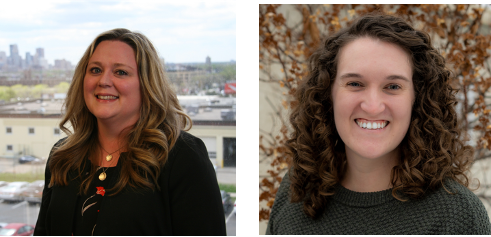
We are Jenna Sethi, Ph.D., and Clare Eisenberg, M.Ed. of Informed Change. Informed Change is a consulting firm that helps youth-serving organizations tell their story of impact and use data for innovation. In our work, we use creative and participatory evaluation strategies that center youth voice.
Hot Tips
Our approach to qualitative research involves learning about people’s experiences through their own words and stories. Our qualitative data collection in program evaluation is typically based on four grounding questions:
- What’s working?
- What’s not working?
- What would you change?
- How have you changed?
Questions 1-3 gather data about how programs can be improved. Question 4 gathers data on program impact. Of course, all four questions can be adapted and modified to fit specific program contexts.
Rad Resources
Simple Data Collection Methods that Engage Youth in Program Evaluation: If you would like to receive a full copy of this resource, which includes additional methods, you can request a free copy on our website.
Telling Stories around the “Campfire”
This method is helpful for gathering in-depth data (stories) about participants’ experiences. Create a real or imaginary campfire with space for youth in your program to sit around it. (If you’re in a space where building a real fire isn’t feasible, gather some flashlights or lamps to create a “lampfire.”) Set the tone with camp snacks like trail mix or S’mores. Provide an object to pass around so that when someone is speaking, others listen.
Create a set of open-ended questions based on the four grounding questions. Ask participants the questions and record their answers using a digital voice recorder or by taking notes. Share power with youth by inviting them to help ask questions and/or record answers.
Before and After
This method is helpful for gaining an understanding of program impact. Youth who enjoy thinking visually or drawing may particularly enjoy this method. If your participants enjoy drawing, give each person a large blank sheet of paper. Have them draw a line down the middle. On the left side, they should draw a small seedling tree and write “Me, Before [Program Name].” On the right side, they should draw a large, fully grown tree and write “Me, After [Program Name].” Ask them to fill in each side of their paper with their reflections on what they were like before joining the program and what they are like now that they have participated in the program. They are welcome to write or draw their reflections. Prompt them by asking:
- How do you feel or act differently because of your participation in this program?
- What do you think about now that you didn’t think about before?
- What can you do now that you couldn’t do before?
Once everyone has filled their paper with reflections, invite them to share the main ideas on their sheets. Take notes or record the discussion to capture participants’ ideas and reflections.
You can add specific questions focused on your program’s outcomes and context as well. If your participants do not enjoy drawing, you can print the tree images and the prompt questions for each participant.
The American Evaluation Association is celebrating Youth Focused Evaluation (YFE) TIG Week with our colleagues in the YFE Topical Interest Group. The contributions all this week to aea365 come from our YFE TIG members. Do you have questions, concerns, kudos, or content to extend this aea365 contribution? Please add them in the comments section for this post on the aea365 webpage so that we may enrich our community of practice. Would you like to submit an aea365 Tip? Please send a note of interest to aea365@eval.org. The views and opinions expressed on the AEA365 blog are solely those of the original authors and other contributors. These views and opinions do not necessarily represent those of the American Evaluation Association, and/or any/all contributors to this site.
